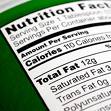
| Counting calories: Getting back to weight-loss basics |
| Your weight is a balancing act and calories play a big role. Find out how calories determine your weight and ways you can best cut calories from your diet. Of all the diet strategies out there, it still comes down to the calorie. Fad diets may promise you that counting carbs or eating a mountain of grapefruit is key to weight loss, but when it comes to weight control, it’s calories that count. Calories: Fuel for your body Calories are the energy in food. Your body has a constant demand for energy and uses the calories from food to keep you functioning. Energy from calories fuels your every action, much as gasoline powers your car. Carbohydrates, fats and proteins are the types of nutrients that contain calories and thus are the main energy sources for your body. The amount of energy in each varies: Proteins and carbohydrates have about 4 calories a gram, and fats have about 9 calories a gram. Alcohol also is a source of calories, providing about 7 calories a gram. Regardless of where they come from, calories you eat are either converted to physical energy or stored within your body as fat. Unless you use these stored calories — either by reducing calorie intake so that your body must draw on reserves for energy, or by increasing physical activity so that you burn more calories — these calories will remain within your body as fat. * Metabolism and weight loss: How you burn calories * Slow metabolism: Is it to blame for weight gain? Tipping the scale: Cutting calories Your weight is a balancing act, but the equation is simple: If you eat more calories than you burn, you gain weight. Because 3,500 calories equals about 1 pound of fat, you need to burn 3,500 calories more than you take in to lose 1 pound. So if you cut 500 calories from your typical diet each day, you’d lose approximately 1 pound a week (500 calories x 7 days = 3,500 calories). Cutting calories doesn’t have to be difficult. In fact, it might be as simple as forgoing one extra item a day, swapping foods or trimming serving sizes. The number of calories you save is likely to translate into pounds lost. Cut out high-calorie foods Skipping one or two high-calorie items that you might have otherwise eaten is a good place to start when cutting calories. For example, you could skip your morning latte or the bowl of ice cream you always have after dinner. Think about what you eat and drink each day and identify items you could cut out. Here are examples of high-calorie foods and beverages and the possible calorie savings: Food Calories Starbucks grande (16 ounces) caffe latte 190 1 bottle (16 ounces) lemon-lime soda 202 1 slice thick-crust pepperoni pizza (1/8 of a 12-inch fast-food pizza) 286 1 large glazed doughnut 299 4-inch cinnamon-raisin bagel with 2 tablespoons cream cheese 344 1 snack bag (3 ounces) nacho-flavored tortilla chips 424 2 cups chocolate ice cream 570 Choose lower calorie foods Replace foods that are high in calories with ones that are lower in calories. For example, drink fat-free milk instead of whole milk and sparkling water or diet soda instead of regular soft drinks. Have an extra serving of vegetables at dinner instead of an extra serving of meat. Or snack on sliced fresh fruit instead of chips. You might find that these substitutions are easy to make and the number of saved calories quickly adds up. Reduce your portion sizes The sizes of your portions affect how many calories you’re getting: Twice the amount of food means twice the number of calories. To reduce how much food you eat, and therefore how many calories you consume, try these tips: * Serve smaller portions. At the beginning of a meal, take slightly less than what you think you’ll eat. You can always have seconds, if necessary. * See what you eat. Eating directly from a container gives you no sense of how much you’re eating. Seeing food on a plate or in a bowl keeps you aware of how much you’re eating. Consider measuring your food with a measuring cup or scale to see how much you are actually eating. * Check food labels. Be sure to check food labels for the serving size and number of calories per serving. You may find that the small bag of chips you eat with lunch every day, for example, is two servings, doubling the calories listed on the label. * Don’t feel obligated to clean your plate. Stop eating as soon as you feel full. Those extra bites of food that you’re trying not to waste add unneeded calories. By Dr. Hugh King |










